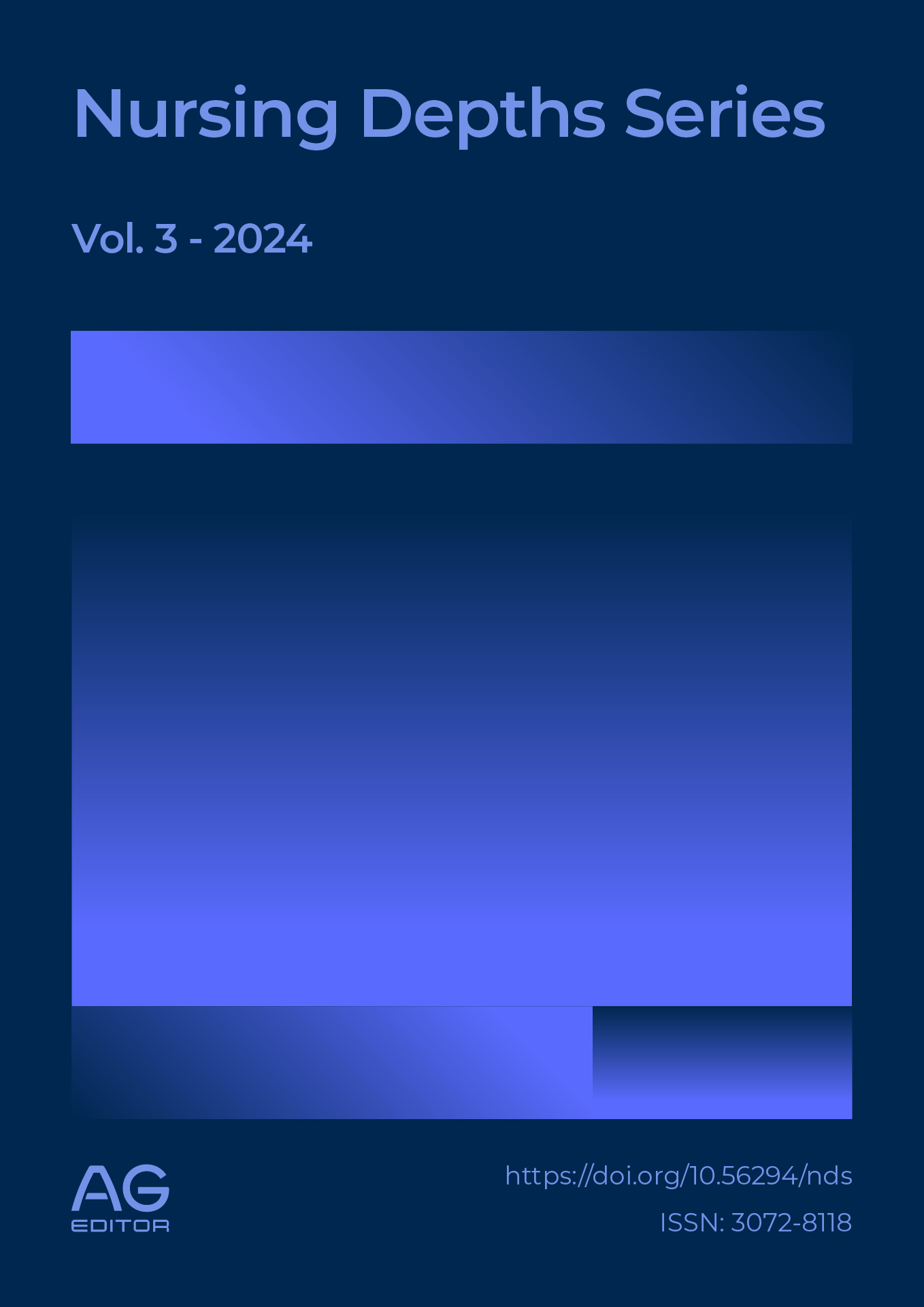Resilience and nursing intervention in adolescents from an educational institution in a vulnerable area of Lima
DOI:
https://doi.org/10.56294/nds2024118Keywords:
Resilience, Mental health, Family HealthAbstract
Family relationships are very important during adolescence, as they allow the development of skills and behaviors that improve resilience. Therefore, the research objective is to determine resilience and nursing interventions in adolescents from an educational institution in a vulnerable area of Lima. This is a quantitative, descriptive, and cross-sectional study with a population of 571 adolescents who responded to a questionnaire on sociodemographic aspects and the Conno-Davidson resilience scale. The results showed that 157 (27.5%) of the adolescents had low resilience, 301 (52.7%) had medium resilience, and 113 (19.8%) had high resilience. In conclusion, family interventions should be considered to identify factors that put adolescents at risk in their early development.
References
[1] D. Ahorsu, C. Y. Lin, V. Imani, M. Saffari, M. D. Griffiths, and A. H. Pakpour, “The Fear of COVID-19 Scale: Development and Initial Validation,” Int. J. Ment. Health Addict., vol. 20, no. 3, pp. 1537–1545, Jun. 2022, doi: 10.1007/s11469-020-00270-8. DOI: https://doi.org/10.1007/s11469-020-00270-8
[2] U. Panchal et al., “The impact of COVID-19 lockdown on child and adolescent mental health: systematic review,” Eur. Child Adolesc. Psychiatry, vol. 1, no. 1, pp. 1–27, 2021, doi: 10.1007/s00787-021-01856-w. DOI: https://doi.org/10.1007/s00787-021-01856-w
[3] A. Stainton et al., “Resilience as a multimodal dynamic process,” Early Interv. Psychiatry, vol. 13, no. 4, pp. 725–732, Aug. 2019, doi: 10.1111/eip.12726. DOI: https://doi.org/10.1111/eip.12726
[4] M. Orte, L. Ballester, and L. Nevot, “Factores de riesgo infanto-juveniles durante el confinamiento por COVID- 19: revisión de medidas de prevención familiar en España,” Rev. Lat. Comun. Soc., vol. 78, no. 1, pp. 205–236, 2020, doi: 10.4185/RLCS-2020-1475. DOI: https://doi.org/10.4185/RLCS-2020-1475
[5] S. Chen and G. Bonanno, “Psychological adjustment during the global outbreak of COVID-19: A resilience perspective.,” Psychol. Trauma Theory, Res. Pract. Policy, vol. 12, no. 1, pp. 51–54, 2020, doi: 10.1037/tra0000685. DOI: https://doi.org/10.1037/tra0000685
[6] J. Espada, M. Orgilés, J. Piqueras, and A. Morales, “Las buenas prácticas en la atención psicológica infanto-juvenil ante el COVID-19,” Clinica y Salud, vol. 31, no. 2. Colegio Oficial de Psicologia de Madrid, pp. 109–113, Apr. 01, 2020, doi: 10.5093/CLYSA2020A14. DOI: https://doi.org/10.5093/clysa2020a14
[7] M. Sharma, A. Olsson, G. Banati, and P. Anthony, “Life in Lockdown: Child and adolescent mental health and well-being in the time of COVID- 19,” 2021.
[8] J. Deighton, S. Lereya, P. Casey, P. Patalay, N. Humphrey, and M. Wolpert, “Prevalence of mental health problems in schools: Poverty and other risk factors among 28 000 adolescents in England,” Br. J. Psychiatry, vol. 215, no. 3, pp. 565–567, Sep. 2019, doi: 10.1192/bjp.2019.19. DOI: https://doi.org/10.1192/bjp.2019.19
[9] M. Luijten et al., “The impact of lockdown during the COVID-19 pandemic on mental and social health of children and adolescents,” Qual. Life Res., vol. 30, no. 10, pp. 2795–2804, Oct. 2021, doi: 10.1007/s11136-021-02861-x. DOI: https://doi.org/10.1007/s11136-021-02861-x
[10] K. Poudel, G. E. Chandler, C. S. Jacelon, B. Gautam, E. R. Bertone, and S. D. Hollon, “Resilience and anxiety or depression among resettled Bhutanese adults in the United States,” Int. J. Soc. Psychiatry, vol. 65, no. 6, pp. 496–506, Sep. 2019, doi: 10.1177/0020764019862312. DOI: https://doi.org/10.1177/0020764019862312
[11] N. Moreno, A. Fajardo, A. González, A. Coronado, and J. Ricarurte, “Una mirada desde la resiliencia en adolescentes en contextos de conflicto armado,” SCIELO Rev. Investig. Psicol., vol. 21, no. 1, pp. 57–72, 2019, Accessed: Dec. 08, 2022. [Online]. Available: http://www.scielo.org.bo/scielo.php?script=sci_arttext&pid=S2223-30322019000100005.
[12] C. Janousch, F. Anyan, R. Morote, and O. Hjemdal, “Resilience patterns of Swiss adolescents before and during the COVID-19 pandemic: a latent transition analysis,” Int. J. Adolesc. Youth, vol. 27, no. 1, pp. 294–314, 2022, doi: 10.1080/02673843.2022.2091938. DOI: https://doi.org/10.1080/02673843.2022.2091938
[13] S. Valero et al., “Emotional impact and resilience in adolescents in Spain and Ecuador during COVID-19: A cross-cultural study,” Rev. Psicol. Clin. con Ninos y Adolesc., vol. 9, no. 1, pp. 29–36, Jan. 2022, doi: 10.21134/rpcna.2022.09.1.3. DOI: https://doi.org/10.21134/rpcna.2022.09.1.3
[14] M. Intriago, A. Tarazona, and I. Maitta, “La resiliencia en adolescentes con problemas de la conducta, con un enfoque de género en estudiantes del 10mo grado,” Rev. Sinapsis, vol. 1390, pp. 1–15, 2020, Accessed: Dec. 08, 2022. [Online]. Available: https://dialnet.unirioja.es/servlet/articulo?codigo=7471226. DOI: https://doi.org/10.37117/s.v1i16.350
[15] E. Estrada, “Inteligencia emocional y resiliencia en adolescentes de una institución educativa pública de Puerto Maldonado,” Cienc. y Desarro. Univ. Alas Peru., vol. 23, no. 3, pp. 27–35, 2020, [Online]. Available: http://revistas.uap.edu.pe/ojs/index.php/CYD/index. DOI: https://doi.org/10.21503/cyd.v23i3.2139
[16] D. Aldea, “Clima social familiar y resiliencia en adolescentes en situación de vulnerabilidad en Barrios Altos, Lima,” CASUS. Rev. Investig. y Casos en Salud, vol. 5, no. 2, pp. 78–97, Nov. 2020, doi: 10.35626/casus.2.2020.282. DOI: https://doi.org/10.35626/casus.2.2020.282
[17] C. Fernández and P. Baptista, “Metodología de la Investigación.” p. 634, 2015, [Online]. Available: http://observatorio.epacartagena.gov.co/wp-content/uploads/2017/08/metodologia-de-la-investigacion-sexta-edicion.compressed.pdf.
[18] K. Connor and J. Davidson, “Manual Connor-Davidson resilience scale ( CD-RISC ),” vol. 18, no. 2. pp. 76–82, 2003, doi: 10.1002/da.10113. DOI: https://doi.org/10.1002/da.10113
Published
Issue
Section
License
Copyright (c) 2024 Olmar Reymer Tumbillo Machacca, Juan Alberto Almirón Cuentas, Yaneth Fernández-Collado, Freddy Ednildon Bautista-Vanegas, Pablo Carías (Author)

This work is licensed under a Creative Commons Attribution 4.0 International License.
The article is distributed under the Creative Commons Attribution 4.0 License. Unless otherwise stated, associated published material is distributed under the same licence.






